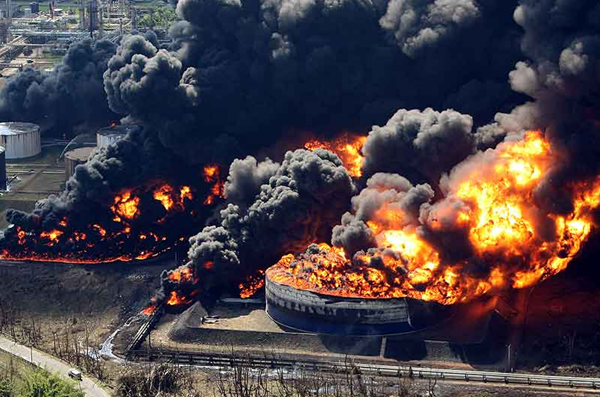Opinion: No one has time to read any more
 |
| More Buncefields unless we start reading? See the scene of the latest disaster below. |
The Explosion Mechanism Technical Group of the Buncefield Major Incident Investigation Board (MIIB) recently presented the results of its investigations at a meeting of explosion specialists. The slow unravelling of the mechanism highlights our apparent general inability to read, digest and retain crucial information.
It’s embarrassing enough that the Buncefield explosion took us all by surprise: regulator, industry and fire & explosion community (including ASK). True, there did not seem to be a plausible explanation for it: when ignited, the cloud of petrol vapour should have burned without any blast or any appreciable off-site impact. Vapour cloud explosions (VCEs) had been understood to require partial confinement of the flammable cloud by buildings and/or congestion by process units, criss-crossing pipework bundles etc, but such features appeared to be almost totally lacking at Buncefield. The explosion appeared to have taken place in a large open space.
At the time of the incident, it was widely held to be unprecedented. The MIIB stated that it “would not have been anticipated in any major hazard assessment of the oil storage depot prior to the incident”.
[1] We had cited the paper when arriving at similar conclusions to those of the MIIB Technical Group as early as 2006, following our investigation on behalf of Hertfordshire Oil Storage Ltd. Despite having limited access to the physical evidence, we identified the same ignition source and pointed out the trees as being potentially responsible for the blast.
STOP PRESS: Buncefields are becoming more frequent. On 23 October 2009, at the Gulf Petroleum site, San Juan, Puerto Rico, a spill from an overfilled petrol storage tank generated a vapour cloud which exploded on ignition. Did the trees play a part?

Sign up for the ASK newsletter and receive more updates like these.
